From nuts to candy to dog food, consumers love the convenience of granulated products in stand-up pouches. Packaging companies are responding by increasingly offering their granular products in this packaging format, with a wide variety of bag types.
So how to pack pellet type products in stand-up pouches? Of course, it is an automatic bag sealing machine! Today, we'll take a step-by-step look at the process involved in turning an empty preformed bag into a shelf-ready finished pellet product.
Introduction of a granule pouch packaging machine
Also known as bagging or bagging machines, this type of packaging equipment fills pre-made bags with products and then seals them. There are two main varieties of bagging and sealing machines: rotary and roll-to-bag. For today's article, we'll dive into the more popular rotation layouts. This machine design saves valuable plant space and was designed with packaging simplicity in mind.
The rotary bag packer first loads the prefabricated bags. There can be one, two or four bag feed "lanes", with the single lane (single lane) model being the most popular. When a single bag feed cannot meet throughput demands, it is necessary to upgrade to a model with additional lanes.
As the bags are fed into the packaging machine, they are clamped and held as the rotary table moves counterclockwise through the different static machine "stations" arranged in a circular fashion around the perimeter of the device. Rotary bag packers typically have 6-10 stations, the most popular configuration being 8 stations. Different steps of the bag filling and sealing process take place at each station.
So let's dive in! Here is how the pellet filling and sealing machine works:
1. Bagging
Automatic pouch filling and sealing machine robot feeding. PNG preformed bags are first loaded into the bag library of the liquid filling and sealing machine. This is a manual process done on a regular basis by careful human operators. The bags are then conveyed to the inside of the machine through the infeed rollers.
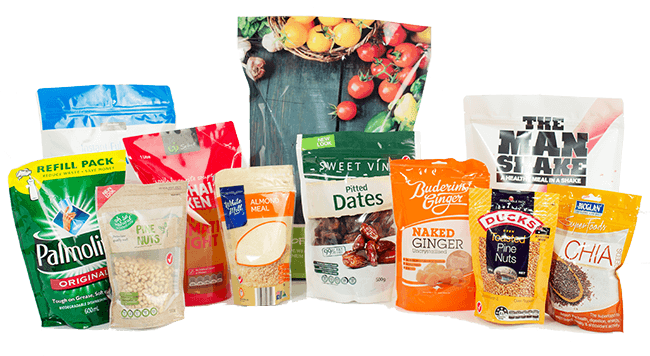
2. Clip bag
When the proximity sensor detects a bag in the magazine, the bag is grabbed with vacuum suction cups and lifted onto a set of bag grippers that will keep the bag from reaching each station of the bag packet throughout the process.
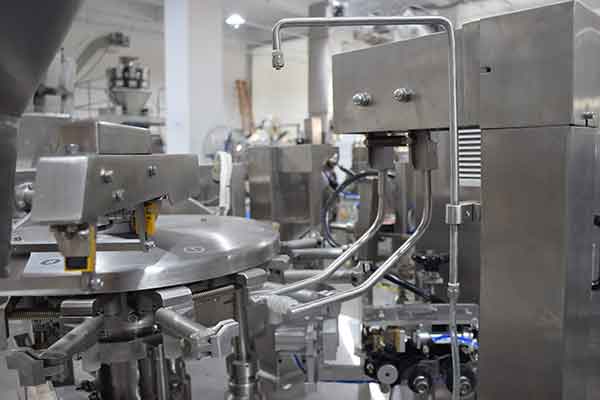
A note on stand-up pouches with pour spouts: Some fluid bag packaging machine limitations mean that your spouted pouches must be within certain design parameters in order to be properly grasped by the machine. Consult your packaging equipment manufacturer for details.
3. Optional printing/embossing
If a date or lot number is required on the finished package, the station can be equipped with printing or embossing equipment. An inkjet printer is recommended, but a thermal transfer option is also available. The embossing option puts raised characters into the bag seal area.
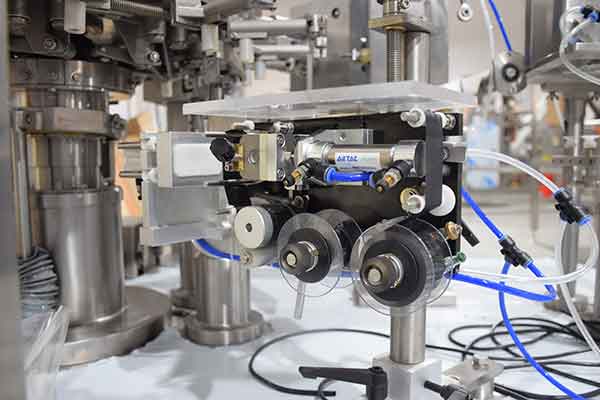
4. Open the bag
During this step, the vacuum cups grab the outside of the fluid bag and gently open the bag. If the bag is equipped with a zipper, the vacuum will open the bag and the top of the bag will be opened by the open jaws. In either case, a blast of clean air is used to ensure the bag is fully open and ready to fill.
There are sensors in the bag area to detect the presence of a bag. If a bag is skewed or missing, these sensors communicate it to the fill and seal station, which is not involved with that particular bag. This ensures that spills and product loss are virtually eliminated, and empty bags can also be reused in future cycles.
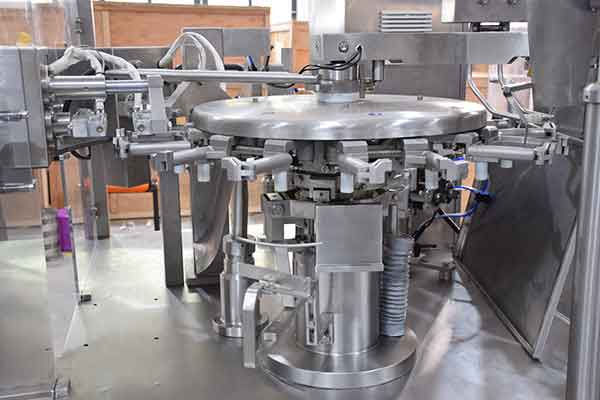
5. Product filling
Now, a predetermined dose of product is filled into the bag through the lower hopper filler, and the settler will "shake" the bag to encourage solid ingredients to the bottom of the bag.
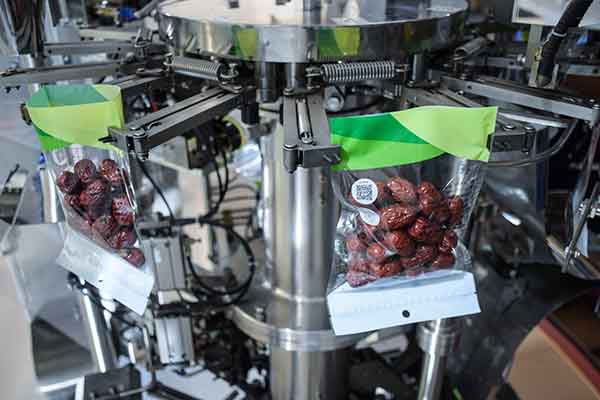
6. Optional second gas station
The second filling station will dispense liquid product if the product has both liquid and solid components, or if the bag needs to be filled with a large amount of liquid.
7. First Sealing Station and Deflation
Two line air release assemblies ensure that any excess air is squeezed out of the bag before the fluid bag is sealed.
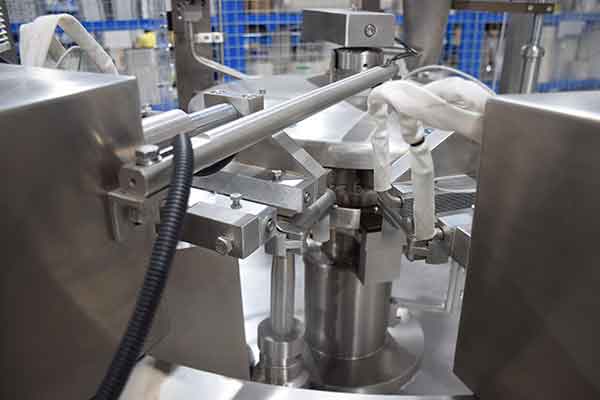
To ensure proper closure of the bag, the application usually requires two sealing stations, this is the first one. A pair of heat seals are closed over the sealing area at the top of the bag, adhering the sealant film layers to each other to form a closed seam.
Alternatively, ultrasonic sealing can be used, which uses vibrations to induce molecular friction to generate heat only in the areas between the film layers. Ultrasonic sealing is more expensive than heat sealing, but can create a more effective seal for some liquid packaging applications. Your bag packer manufacturer can guide you in finding the best sealing option for your specific needs.
8. The second sealing station
As in the previous step, a second heat sealing station reinforces the seal, ensuring a fully closed package seam. Ultrasonic sealing does not require a second station.
9. Seal cooling and discharge
To strengthen and flatten the seams, the cooling rods now pass through the sealed portion of the bag. This cooling strip can also have serrations added to the seams if desired. The completed bags are now discharged onto a conveyor belt and can be placed in containers or transported off-line to auxiliary equipment such as case packers or carton packers.
Previous: What is packing line?
Copyright © CoreTamp All Rights Reserved | Sitemap | Powered by 